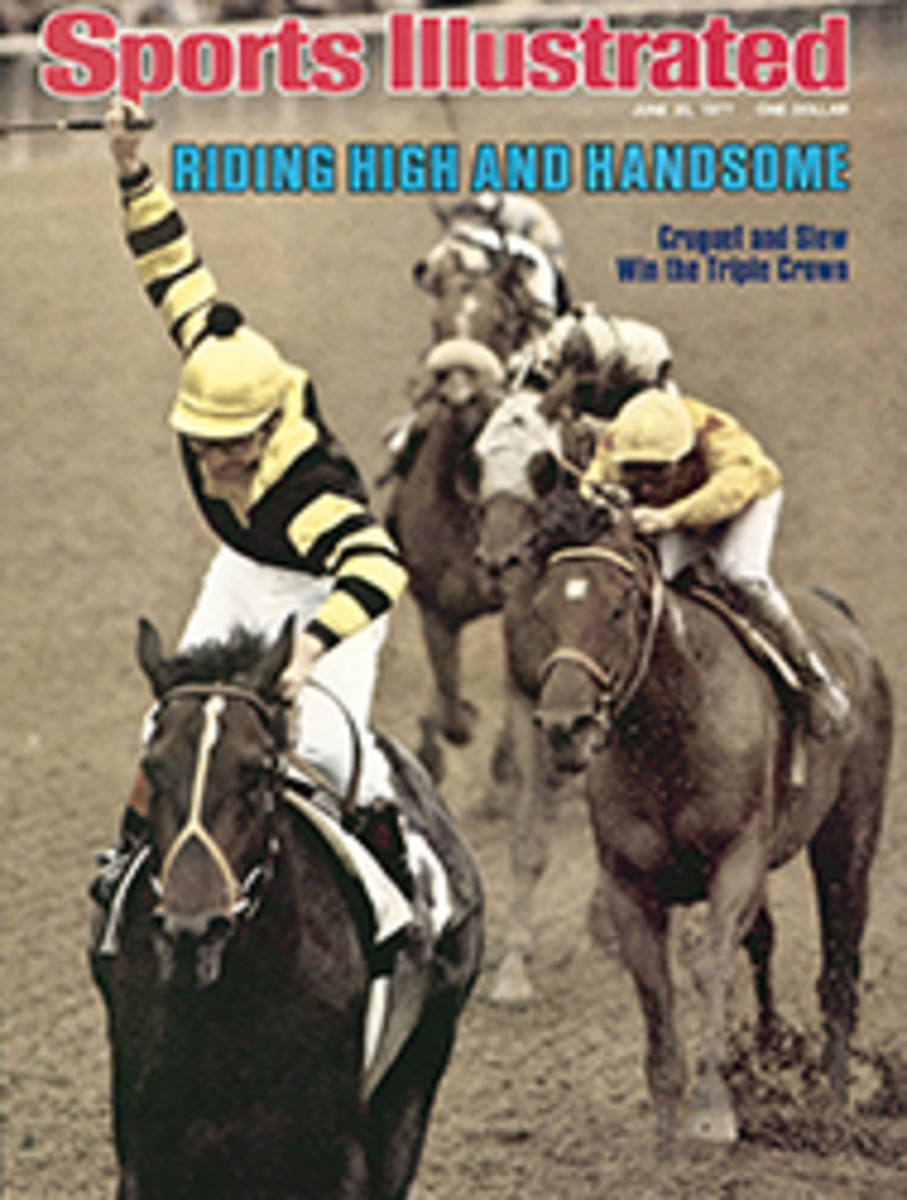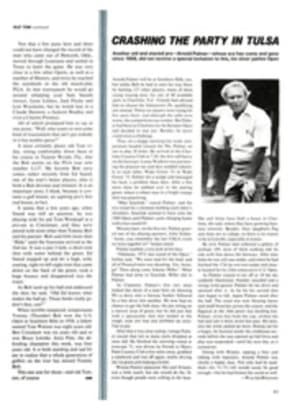
LETTER FROM THE PUBLISHER
How and where a horse will run is less of a problem for bettors than for photographers. As any of the seven SPORTS ILLUSTRATED photographers assigned to Seattle Slew's attempt at the Triple Crown in the Belmont last week would point out, the bettor's $2 is riding only on the horse's nose at the finish, whereas photographers need to capture high points all along the way.
The ideal shot is usually the one from the camera the photographer is holding, and Belmont Park is good in this respect because the start and finish of the mile-and-one-half stakes are the same, offering the photographer hand-held opportunities at the wire. "But you never know what part of the track is going to be most important," says Director of Photography Jerry Cooke. "That is the value of remote cameras." Another plus is the ability to get those shots seemingly taken under the horses' hooves with cameras set up as in the picture above.
On the other hand, "Every time you set up a remote camera, you take a chance," says Cooke. "If the lens you selected turns out to have been wrong, for instance, you get a photograph of sand—in focus and properly exposed, of course." There is also the weather. "Photographers love sunshine, but will settle for a consistently cloudy day. Anything but the sun moving in and out. Every time the light changes, the exposure must be adjusted, and with remote cameras scattered around the track, you do a lot of running."
You also do a lot of praying. A thoroughbred runs at approximately 36 miles an hour, covering a mile and a half in about 2½ minutes, so that it is moving at more than 50 feet per second. A motor-driven camera shoots at four frames per second, which means a horse will move more than 12 feet for each frame the camera fires. A photographer focuses for the median and hopes the horse is there at the¼ second the camera is triggered. If his luck is out, he will capture the horse coming and going, both too early and too late. He also hopes his assistant is correctly programmed to trigger the remote. "First-time assistants have been known to become so interested in a tight race they forget to fire," Cooke says. An ideal assistant would be something like R2-D2, the squatty robot of Star Wars; SPORTS ILLUSTRATED's answer is Anthony Donna, who, though a mere human, has been known to activate three separate remotes, using hand switches and foot pedals.
A safer solution is to cover more track with a wide-angle lens, but this produces a smaller and less dramatic picture. The power and grace of a moving horse are best shown in a big image.
As things turned out on Saturday, the cover photograph was taken by Heinz Kluetmeier (who also took the pictures on pages 20-21), shooting down from a stand near the finish, but the shot of the first turn, which opens the story on pages 16-17, came from a remote set up by Tony Triolo.
PHOTO
REMOTE CAMERAS AWAIT THE POUNDING OF HOOVES ALONG THE BELMONT RAIL

